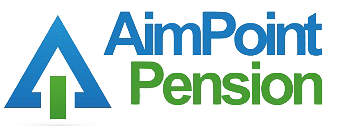On December 20, 2019, the Setting Every Community Up for Retirement Enhancement (SECURE) Act was signed into law.
The SECURE Act represents some of the most significant changes to retirement plan law since the passage of the Pension Protection Act of 2006, over thirteen years ago. The provisions of the Act are broad ranging and span many different effective dates.
Financial Help for Plan Sponsors
Though tax credits have been in place to help offset the cost of adopting a new retirement plan, the SECURE Act significantly expands the tax credit for employers. Prior to the SECURE Act, employers were allowed a tax credit of the lesser of 50% of expenses or $500 per year for the first three years. Under SECURE, the amount of the tax credit is now raised to the lesser of 50% of expenses or $250 times the number of non-highly compensated employees eligible to a maximum of $5,000. Additionally, if the new plan enrolls employees into the plan using an automatic enrollment provision, the employer will get an additional annual credit for start-up costs of $500 per year. This credit is also available to existing plans that convert to an automatic enrollment design and the new credits apply to the first 3 years. These changes are effective for taxable years beginning after December 31, 2019.
SECURE provides for a new type of Multiple Employer Plan (MEP) called a Pooled Employer Plan (PEP). PEPs are intended to help smaller employers pool together to participate in a single plan and save on administrative costs. Though a PEP may have many participating employers, it has a single plan document, files a single Form 5500 and undergoes a single plan audit. A PEP is a way for small plans to combine their assets into a larger pool giving them more buying power and hopefully lower expense ratios for their participants. MEPs have existed for some time and a PEP is a type of MEP called an “open MEP.” Traditional MEPs, or closed MEPs, required that the adopting employers must share a common organizational relationship (for example, a dental association might sponsor a MEP for its members or a Professional Employment Organization for its clients). In addition to creating PEPs, SECURE also created relief from the “one bad apple” rule that was the major deterrent for participating in a MEP. The one bad apple rule simply meant that if one adopting employer within the MEP had a compliance failure, all participating employers in the MEP would be painted with the same brush. SECURE created a remedy for the one bad apple rule, making MEPs and PEPs a more desirable plan design.
A PEP must be sponsored by a Pooled Plan Provider (PPP), which is likely to be a financial services company, third-party administrator, insurance company, recordkeeper, or similar entity. The PPP must serve as the ERISA section 3(16) plan administrator, as well as the named fiduciary for the plan. It is expected that the vast majority of PEPs will retain an ERISA section 3(38) investment advisor who would be responsible for selecting and monitoring the plan’s investment menu. Consequently, the participating employers would only have fiduciary responsibility for prudently selecting and monitoring the PPP. This is expected to be very appealing to smaller employers who are concerned about the potential for fiduciary responsibility and liability.
The PEP provisions are delayed a year and will be effective for plan years beginning after December 31, 2020. The IRS and DOL are expected to provide guidance in the coming year. If you have questions regarding this new plan design, please contact us.
Changes to 401(k) Plans
The SECURE Act also has provisions affecting 401(k) plans. These provisions are effective for plan years beginning after December 31, 2019.
Plans that elect to utilize a non-elective contribution (minimum of 3% of pay to all eligible participants) to satisfy the safe harbor provision, no longer need to distribute an annual safe harbor notice. Previously, the opportunity to make an annual safe harbor election was required to be made prospectively, no more than 90 days, or less than 30 days prior to the beginning of the plan year in which they would apply. Under SECURE, 401(k) plans can now be amended mid-year to elect safe harbor provided a non-elective contribution formula is used. These provisions do not apply to those plans utilizing matching contributions to satisfy safe harbor provisions.
The maximum percentage for automatic enrollment contributions has increased from 10 to 15% of compensation for qualified automatic contribution arrangement safe harbor plans.
Previously, part-time workers could be excluded from participating in a 401(k) plan if they had not worked 1,000 hours in a 12-month eligibility period. For plan years beginning after December 31, 2020, the SECURE Act requires employers to include long-term, part-time workers in 401(k) plans. Eligible employees must have at least 500 annual hours of service for three consecutive years and be age 21 or older. However, these participants can be excluded from safe harbor contributions, nondiscrimination testing and top-heavy requirements.
General Retirement Plan Changes
Beginning with forms required to be filed after December 31, 2019, SECURE has raised the late filing penalties for Form 5500 from $25 per day to $250 per day, not to exceed $150,000. For Form 8955-SSA, the penalty for late filing has increased from $1 per day for each day of late filing to $10 per participant per day, not to exceed $50,000. A Form 8955-SSA is required to be filed with respect to any plan participant who separated from service during the year and has a deferred vested benefit under the plan.
Prior to the SECURE Act, Required Minimum Distributions (RMDs) were required to begin no later than April 1st following the year in which a participant reached age 70 ½. Starting with participants obtaining age 70 ½ in 2020, the minimum distribution age has been raised to 72.
A disaster relief provision will apply to major disasters which occurred after 2017 through February 18, 2020. Under this provision, “qualified disaster distributions” of up to $100,000 are exempt from the 10% premature distribution penalty. A “qualified disaster distribution” is a distribution made to an individual who suffered an economic loss and whose principal residence is in a qualified disaster zone during the period of the disaster (as specified by the Federal Emergency Management Agency (FEMA)). In addition, the normal participant loan limit of $50,000 has increased to $100,000 for affected individuals.
SECURE also allows for penalty free withdrawals for expenses related to the birth or adoption of a child. The lifetime withdrawal amount is set at $5,000 and is effective for distributions made after December 31, 2019.
Plans that have allowed the use of credit cards to obtain participant loans will no longer be allowed to do so coincident with the enactment of SECURE.
An employer may now set up a new retirement plan after the end of the fiscal year and treat it as effective for deduction purposes if adopted no later than the due date of that year’s return. For example, a plan adopted in February 2021, can be treated as being effective for 2020 tax year). This provision is effective after December 31, 2019.
“This legislation will help hard-working Americans prepare for a financially secure future by incentivizing small businesses to set up employer-sponsored retirement plans”
— Emily M. Dickens, SHRM Chief of Staff
Pension Plan, IRA and other Changes
SECURE will require a lifetime income illustration on participant benefit statements. The legislation requires benefit statements provided to defined contribution plan participants to include a lifetime income disclosure at least once during any 12-month period. The disclosure would illustrate the monthly payments the participant would receive if the total account balance were used to provide lifetime income streams. The DOL is expected to give more definitive direction to the format and content of the illustrations. Compliance is delayed until 12 months after additional guidance is provided by the DOL.
SECURE provides a Fiduciary Safe Harbor for selection of Lifetime Income Providers within a retirement plan. The legislation provides protection from liability for fiduciaries for any losses that may result to the participant or beneficiary due to an insurer’s inability in the future to satisfy its financial obligations under the terms of the contract. Removing ambiguity about the fiduciary standard eliminates a roadblock to offering lifetime income benefit options under a defined contribution plan.
The SECURE Act also increases the portability of annuity investments by letting employees who take another job or retire move their annuity to another 401(k) plan or to an IRA without surrender charges and fees. Portability also comes into play if the lifetime income investment is no longer authorized to be held as an investment option under the plan (effective for plan years beginning after December 31, 2019).
The legislation repeals the prohibition on contributions to a traditional IRA by an individual who has reached age 70½. As life expectancy increases, there is an increased number of individuals continuing employment beyond the traditional retirement age.
Changes to Earliest Age for Pension Plan In-Service Retirement
Pension plans, such as defined benefit pension plans, money purchase pension plan, and hybrid plans, generally are not allowed to permit distributions before the earlier of retirement (i.e., termination of service) or normal retirement age. However, since 2007, current law has also permitted an employee to receive benefits while still in-service and before retirement, as long as the participant had reached age 62. The SECURE Act reduces the earliest age an employee can receive in-service retirement benefits from a pension plan from age 62 to age 59½. The change is effective for plan years beginning after December 31, 2019.
Changes for Defined Benefit Plans
SECURE modifies the nondiscrimination rules with respect to closed or frozen plans to permit existing participants to continue to accrue benefits. The modification will protect the benefits for older, longer tenured employees as they near retirement (effective on the date of enactment).
The Act also eliminates the so-called stretch IRA. Under current law, after the death of a plan participant or IRA owner, a non-spouse beneficiary is permitted to stretch the required minimum distributions over the beneficiary’s life based on his or her life expectancy. Under the new law, all amounts held by the plan or IRA must be distributed within 10 years of the plan participant’s or IRA owner’s death. An exception to the 10-year distribution rule is provided for an “eligible beneficiary,” which includes a surviving spouse, minor child, disabled or chronically ill individual, or any other beneficiary who is no more than 10 years younger than the participant or IRA owner. The new rules will apply to participants with a date of death after December 31, 2019.
With the scope of changes associated with SECURE, it is important to note that the act includes a remedial amendment period that allows plans to operate in accordance with the new law without having to immediately amend the plan. This remedial amendment period requires most plans to adopt conforming amendments by the end of the 2022 plan year. Government plans and collectively bargained plans will have an extended amendment period lasting until the end of the 2024 plan year.
The SECURE Act is obviously very broad in scope and may have changes that directly affect the future operation of many retirement plans. Please contact us with any questions or concerns.
Upcoming Compliance Deadlines
| February 2020 | ||
|---|---|---|
| 28th | Form 1099-R – The Form 1099-R is due for any distributions that occurred during the 2019 calendar year. Note: Participant Loans that are in default may be considered “deemed” distributions and are reportable on Form 1099-R. | |
| March 2020 | ||
| 15th | ADP/ACP Corrective Testing – Deadline for distributing contributions and earnings as corrective measures to ADP and ACP testing for calendar year plans. Corrective distributions made after the deadline will result in a 10% excise tax on the amount distributed. | |
| Employer Contributions – Deadline for contributing employer contributions for amounts to be deducted on 2019 S-corporation and partnership returns for filers with a calendar fiscal year (unless extended). | ||
| April 2020 | ||
| 1st | Required Minimum Distributions – Regulations require that a participant must receive a required minimum distribution (RMD) by April 1st of the year following the year in which the participant attains age 70 ½. Distributions may be delayed until actual retirement unless the participant is a 5% or more owner. | |
| 15th | Excess Deferral Amounts – If a participant makes salary deferral contributions in excess of the IRS-issued limits in any calendar year, the plan must return the excess amount plus earnings to the participant by April 15 of the year following the year in which the excess occurred. The limits for 2019 were $19,000, or $25,000 for those age 50 and over if the plan allowed for catch-up contributions. | |
| Employer Contributions – Deadline for contributing employer contributions for amounts to be deducted on 2019 C-corporation and sole proprietor returns for filers with a calendar fiscal year (unless extended). | ||
© Benefit Insights, LLC. All Rights Reserved.





















































